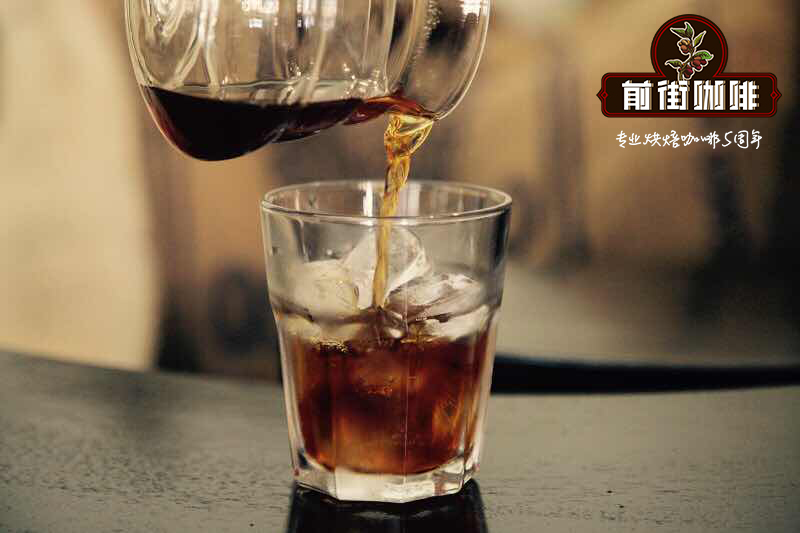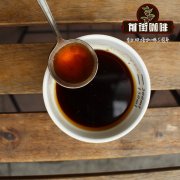What is the growing environment of Yunnan Baoshan Iron Card Coffee Beans? Baoshan coffee beans Arabica coffee is tin

Professional coffee knowledge exchange more coffee bean information please follow the coffee workshop (Wechat official account cafe_style)
What is the growing environment of iron pickup coffee beans in Baoshan, Yunnan? Baoshan Coffee beans small Coffee Coffee is a tin truck?
Due to the unique geographical environment and climatic conditions, Yunnan coffee has formed a unique flavor of strong but not bitter, fragrant but not strong, with a little fruit flavor. World-class coffee experts evaluate it as a good coffee in the world, and its cultivation techniques and per unit yield are also world-class. Yunnan coffee is a variant of Arabian original species, which is generally known as Yunnan small-grain coffee, evergreen shrub, with small nuts, thick peel, sweet pulp, mellow products and low coffee content, so it is also called light coffee. It is the main cultivated variety in the world.
The quality of coffee depends on many factors, such as growing environment, climate, cultivation and management techniques and so on. Its excellent growth environment is low latitude, high altitude, sufficient rainfall and suitable sunshine, so the north latitude is 15. The ideal growing area for coffee is between the Tropic of Cancer and the Tropic of Cancer. Our planting base in Yunnan is located in 23 ℃ north latitude and 99 ℃ east longitude, with an elevation of 1230 meters, a height of 1540 meters, a height difference of 310 meters, a topography of mountains and slopes, and a large undulation, fertile soil, sufficient sunshine, rich rainfall and large temperature difference between day and night, these unique natural conditions have formed the special taste of Yunnan coffee-thick but not bitter, fragrant but not strong, slightly fruity, and the quality is similar to Colombian small grain coffee. Coffee fresh fruit is generally picked from November to February of the following year and processed by washing and wetting. Advanced imported equipment is used in coffee processing. At present, 30% of Yunnan coffee products are supplied to the domestic market and 70% are sold abroad.
Of course, if it is used to make instant coffee or general commercial beans, high-yield catimor is a good choice, but if you want to look for Yunnan specialty coffee, then the old variety of iron pickup has become the first choice because of its congenital excellent genes. Therefore, this trip to Yunnan also followed the trail of the old varieties. But the reality is really cruel. Before going, Brother Zou told me that there was an old variety in his relative's house, but what he saw excitedly was a crazy growing coffee forest, which belonged to his aunt. Because the aunt was too old and did not have the strength to replant and renovate-- these old varieties survived, but the aunt was unable to manage it alone, so he let the tree grow naturally and pick some fruit when it was ripe.
Typica: the most classic high-quality Arabica species, which is derived from many commercial improvements at present. It has excellent taste and is recognized as a boutique coffee variety, but its yield is very low and it is vulnerable to rust, so more manpower management is needed. Tieka Coffee, native to Ethiopia and southeastern Sudan, is the most widely cultivated variety of coffee in the Western Hemisphere. The plant is stronger, but not light-tolerant, and the yield is higher in Hawaii. The top leaf of the iron pickup is red copper, which is called red top coffee.
Coffee belongs to the evergreen shrub of the genus Rubiaceae. There are about 40 species of plants under the branch of the genus Coffee, among which there are only three species of coffee of commercial value-- Coffea Arabica, Coffea Robusta and Coffea Liberica. These three varieties are called the "three native species of coffee". Arabica species account for about 70% of the world's total production, and boutique coffee is in large demand; Robusta species account for 20%, which is mainly used in instant and canned coffee, and the caffeine content is twice that of Elaraby species; Liberian species are only traded in Suriname, Libya, C ô te d'Ivoire and other countries in West Africa because of their intolerance to leaf rust and poor flavor, and are not popular all over the world.
Coffee is subject to many challenges during its growth, such as moisture, frost, diseases and insect pests. Among them, "leaf rust" is the most harmful. All natural things evolve under natural selection, and so do coffee trees. Therefore, the "Tibika species" and "bourbon species" mentioned in this article belong to the "species" of biological taxonomy, phylum, class, order, family, genus and species, which can be classified into "secondary species", "variety" and "variety" in order, among which there are mutant varieties which belong to natural evolution. There are also people who deliberately cultivate varieties with special needs. Generally speaking, the Arabica species often seen on the market are only a very general statement, the actual species are not subdivided, we can only know that their upstream ancestors are Arabica species.
[Typica] Tibica species
The species closest to the original species. The bean shape is slightly longer, like an elongated egg, known as Arabigo or criollo in Central America. There is a clean citric acid taste, sweet aftertaste, low resistance to leaf rust, making it not easy to take care of, low seed setting, coupled with a long harvest period (harvest every two years), low yield. All Arabica, the oldest native variety in Ethiopia, are derived from Tibica. The top leaf of Tiebika is bronzed and the bean body is oval or thin in shape; the flavor is elegant, but the physique is weak, the disease resistance is poor and the fruit yield is less. Excellent manor beans such as the Blue Mountains of Jamaica, Manning of Sumatra and Kona of Hawaii all belong to Tibika. One of the characteristics is that the top leaf of Tibica is bronzed.
Important Notice :
前街咖啡 FrontStreet Coffee has moved to new addredd:
FrontStreet Coffee Address: 315,Donghua East Road,GuangZhou
Tel:020 38364473
- Prev

What are the benefits of coffee beans in the sun? What are the ways of drying raw coffee beans in addition to the sun?
Professional coffee knowledge exchange more information about coffee beans Please follow the coffee workshop (Wechat official account cafe_style) what are the benefits of coffee beans in the sun? What are the ways of drying raw coffee beans in addition to the sun? The requirement of the sun treatment on the climate is very high. After the coffee fruit is harvested, the farmers will directly dry it in the sun. After 23 weeks of sun drying, the coffee fruit will be shelled again.
- Next

The taste of Yemen mocha coffee beans what are the characteristics of Yemen mocha coffee beans?
More information on coffee beans Please follow the word Coffee Workshop (Wechat official account cafe_style) Coffee originated in the ancient tribal society, before Islam, this word is one of the names of wine, in the ancient dictionary "Arab al-Arab", the word means wine, and its root Qahlan means loss of appetite. Coffee originated in East Africa.
Related
- Detailed explanation of Jadeite planting Land in Panamanian Jadeite Manor introduction to the grading system of Jadeite competitive bidding, Red bid, Green bid and Rose Summer
- Story of Coffee planting in Brenka region of Costa Rica Stonehenge Manor anaerobic heavy honey treatment of flavor mouth
- What's on the barrel of Blue Mountain Coffee beans?
- Can American coffee also pull flowers? How to use hot American style to pull out a good-looking pattern?
- Can you make a cold extract with coffee beans? What is the right proportion for cold-extracted coffee formula?
- Indonesian PWN Gold Mandrine Coffee Origin Features Flavor How to Chong? Mandolin coffee is American.
- A brief introduction to the flavor characteristics of Brazilian yellow bourbon coffee beans
- What is the effect of different water quality on the flavor of cold-extracted coffee? What kind of water is best for brewing coffee?
- Why do you think of Rose Summer whenever you mention Panamanian coffee?
- Introduction to the characteristics of authentic blue mountain coffee bean producing areas? What is the CIB Coffee Authority in Jamaica?

